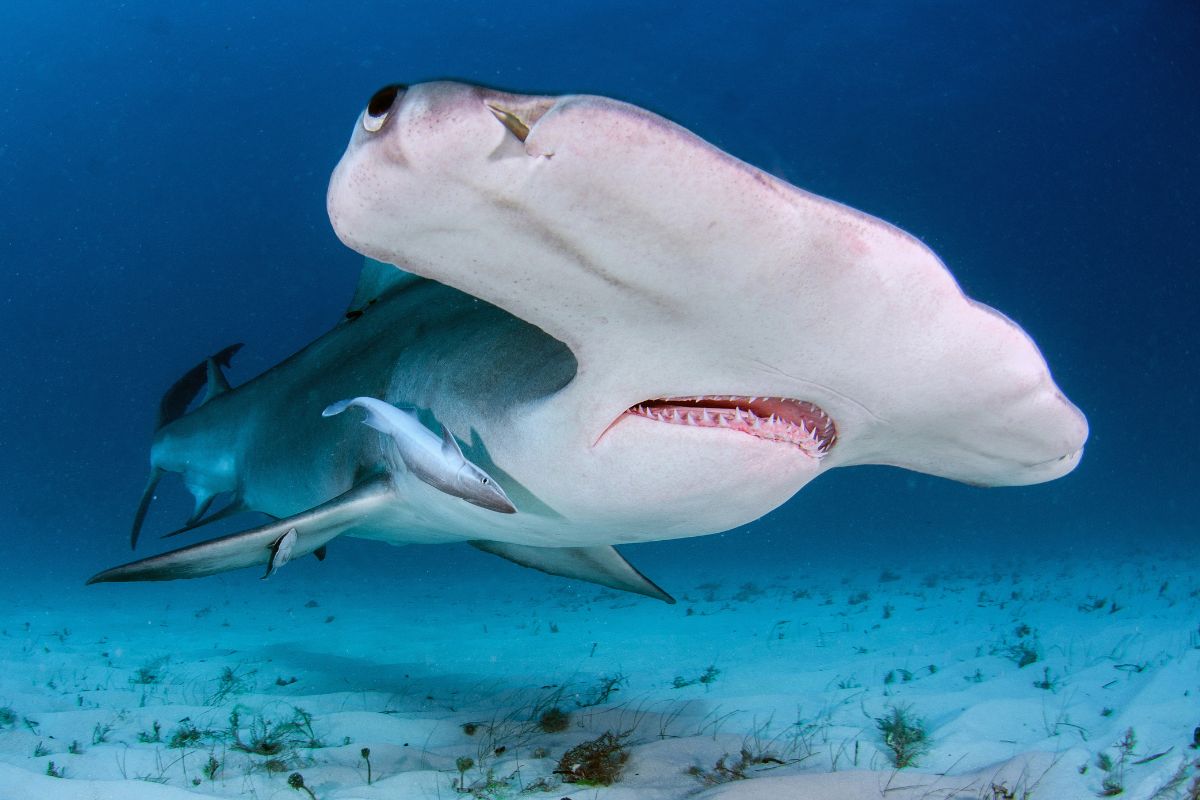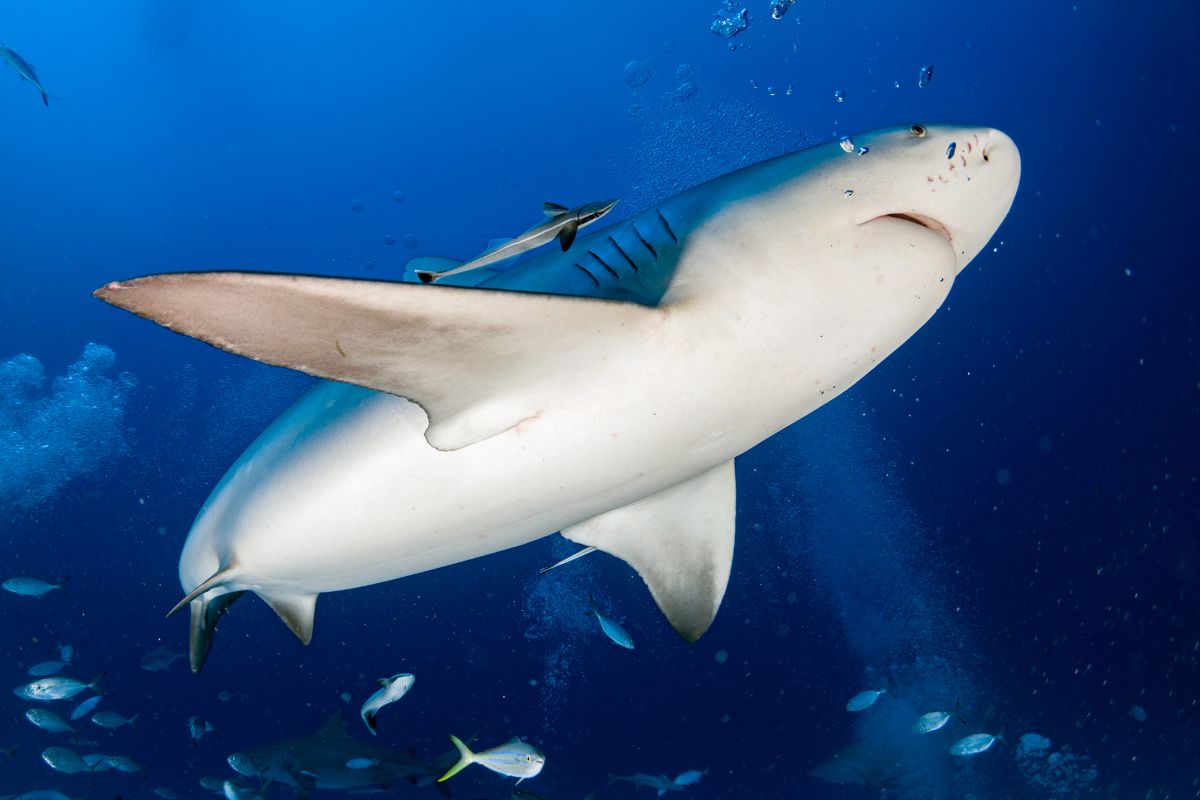Often considered the third coast of the United States, the Gulf of Mexico is a massive ocean basin that is best known for its distinct oval shape, the various islands that surround it from the Atlantic side, and is a massive stretch of coast along both the Southern United States and Mexico.

With plenty of warm waters and nutrients found in the Gulf, where it isn’t the site of oil production, it is a fertile bed for hundreds of species of marine life.
From plankton to squid, to fish, and even dolphins and whales. There is a lot of life to be found in this large basin.
Given the vast amount of life that lives here, it has many people, including anxious beach goers and surfers, about whether or not there are any sharks in these waters, and, if there are if they are any threat to people.
Well, that is what this guide is here to answer!
In this article, we are going to answer whether any species of sharks make their home in the Gulf of Mexico, and if so, what kinds to expect here.
Do Sharks Live In The Gulf Of Mexico?
So, before we go any further, we should probably answer the main question we have presented first: Are there any sharks that can be found in the Gulf of Mexico.
The simple answer to this question is: Yes!
With such a massive amount of potential prey species, from fish to squid, to even some species of whales and dolphins, there are plenty of species that can sustain populations of sharks, whether they migrate to or from the region, or whether they stay in the Gulf regularly and do not migrate.
It is generally estimated that the Gulf of Mexico is home to up to 51 species of sharks that live in a variety of niches, from small dogfish, to the large and feared great white shark
Sharks You Can Find In The Gulf Of Mexico
So, we have established if sharks live in the Gulf of Mexico. Now, you are probably wondering what types of sharks live in the area.
The following list is the species of sharks that have been known to be found in the gulf for at least a portion of the year.
Nurse Sharks

Starting off this list, we have a species of shark that is regularly found in warmer waters, the nurse shark.
Nurse sharks have an almost catfish appearance to them, with their dorsal fins being set further back along their spine than other sharks, and have a rounded head with a small mouth.
They also tend to move very slowly, only moving in short bursts of speed when they have detected prey nearby.
Because of this slow movement, rounded, friendly appearance, and their ability to tolerate humans both outside of captivity for tagging and research purposes, they are popular sharks for divers to swim by, despite them being large at over 10 feet when fully grown.
Because of this, however, many incautious divers can find themselves receiving retaliatory bites, resulting in nurse sharks having the fourth-highest recorded shark bites on humans, although they very rarely result in serious or even minor injuries.
Nurse fish can be found in waters across the Atlantic, though they are most common around the Bahamas and the Gulf of Mexico.
Hammerhead Sharks

This particularly iconic looking shark, the hammerhead, is a common site in the water around the equator, including in the Gulf of Mexico, particularly loving shallow waters both away and close to shores, with it even being known to travel into shallow bays.
Hammerheads are best known for their iconic head shape and eye placement, which give them almost 360-degree vision, allowing them to spot both prey and potential predators without being surprised.
Because of this, they tend to avoid divers, meaning that there has not been a single attack from hammerheads on people in recorded history.
These sharks love swimming in warm, tropical waters with plenty of potential prey, meaning that the Gulf of Mexico is an ideal location for a variety of Hammerhead species.
However, thanks to both overfishing, as well as pollution from oil disasters, the number of hammerheads sharks is in a steep decline in the gulf.
Bull Shark

One of the most aggressive species of sharks that are found across the warm waters of the world, it is somewhat surprising to find bull sharks in seas, as they prefer to swim along rivers, creeks, and estuaries.
However, the abundance of fish life, plus the warm waters of the basin, mean that bull sharks aren’t an uncommon sight in the Gulf of Mexico.
Bull sharks can eat most marine animals found in the Gulf of Mexico, with only some larger dolphins and whales off the menu.
Because they are highly territorial, and often take intrusion as a provocation, bull sharks are some of the sharks that are most associated with shark attacks.
Great White Shark

Of course, when discussing aggressive shark species, we cannot talk about shark attacks without mentioning the great white shark itself.
Although generally uncommon in the Gulf of Mexico, great white sharks have been spotted in the area, especially during times when the waters are generally cooler and at temperatures that they prefer.
Generally speaking, this means that they are usually spotted around wintertime, as well as during the night.
Great whites are the largest predatory shark species alive today, ranging from 14 to 18 feet long, with large examples being as big as 20 feet!
Generally speaking, however, great whites tend to prefer to hunt fattier species, such as seals and dolphins, so they don’t tend to attack humans.
Only around 100 shark attacks are recorded on great whites globally, much less in the gulf. Follow safety guidelines if a great white has been reported in the area.
Closing Thoughts
As you can see, the hotbed of sea life that is the Gulf of Mexico is full of does obtain sharks too, so swim safely if you are planning a trip to the beach here!
- Is It Possible For A Shark To Swim Backwards? - August 2, 2024
- Are Leopard Sharks Dangerous? - August 2, 2024
- What Are The Differences Between Shark And Dolphin Fins? - August 1, 2024








